When it comes to preserving bone health, it is crucial to use the correct ICD-10 code for screening osteoporosis.
Understanding the nuances of coding in healthcare is crucial for accurate reporting and billing procedures.
Let's explore how this specific code impacts patient care and clinical outcomes, shedding light on the intricate details that can significantly influence the screening process.
Understanding the ICD-10 Code Basics
When screening for osteoporosis, understanding the ICD-10 code basics is crucial for accurate billing and coding in healthcare settings. The specific code designated for screening for osteoporosis is Z13.820 in the ICD-10-CM.
This alphanumeric code is essential for documenting encounters related to osteoporosis screening, ensuring proper reimbursement and tracking of healthcare services. Falling under the category of Factors Influencing Health Status and Contact with Health Services, Z13.820 enables healthcare providers to identify and manage osteoporosis risk through timely screenings.
Importance of Accurate Coding
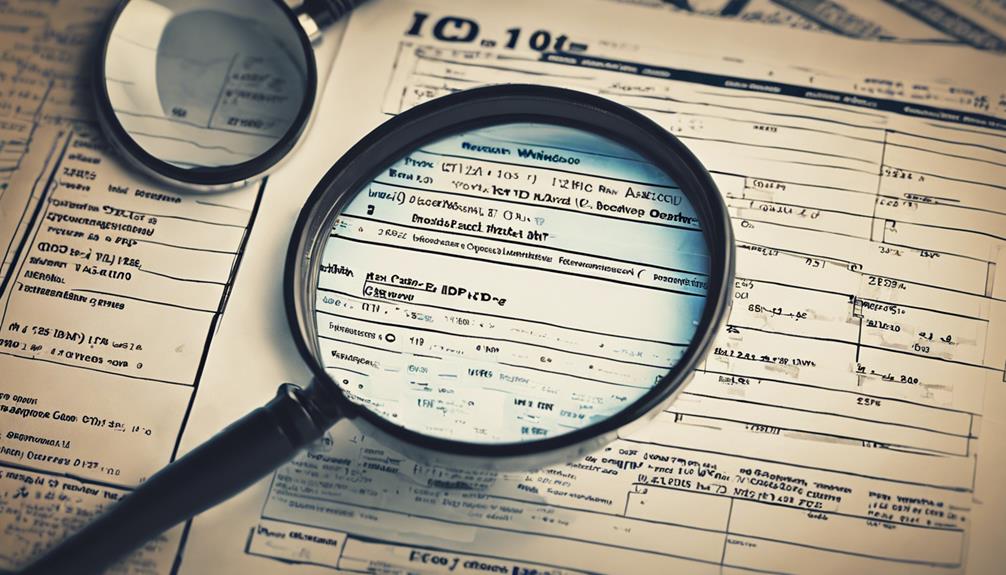
Accurate coding is crucial for healthcare providers as it impacts reimbursement and compliance with regulations. Proper coding, like using Z13.820 for osteoporosis screening, ensures accurate tracking of patient screenings.
It's essential to focus on coding precision to streamline documentation and support data accuracy for effective population health management.
Coding Accuracy Impact
Ensuring precise coding for osteoporosis screening is crucial for proper reimbursement and accurate data analysis in healthcare settings. The correct ICD-10-CM code for osteoporosis screening (Z13.820) plays a significant role in identifying patients undergoing these procedures accurately.
Accurate coding is essential for tracking screening rates and outcomes related to osteoporosis within patient populations. Errors in coding can have financial implications and impact the quality reporting associated with osteoporosis screening.
Reimbursement and Compliance
For proper reimbursement and compliance in healthcare settings, precise ICD-10-CM coding is essential, such as using Z13.820 for osteoporosis screening. Utilizing Z13.820 ensures accurate documentation of encounters related to osteoporosis screening, aiding in compliance with coding guidelines.
Healthcare providers benefit from using Z13.820 as it facilitates appropriate reimbursement for screening services. Consistent application of Z13.820 enhances reimbursement accuracy and allows for efficient tracking and reporting of osteoporosis screening activities.
Coding Guidelines for Osteoporosis Screening
Let's highlight the importance of following specific coding guidelines for osteoporosis screening.
Understanding proper documentation practices and reimbursement considerations is crucial for accurate coding and billing in healthcare settings.
Ensuring compliance with ICD-10-CM code Z13.820 is essential to facilitate efficient and effective osteoporosis screening processes.
Coding Guidelines Importance
Understanding the significance of adherence to coding guidelines for Z13.820 is paramount for ensuring accurate reimbursement and error-free reporting of osteoporosis screening encounters. Proper utilization of the Diagnosis Code Z13.820 guarantees that screening procedures are appropriately documented and billed, reducing the risk of coding inaccuracies.
Compliance with coding standards for Z13.820 not only facilitates seamless tracking of osteoporosis screening encounters but also supports the maintenance of consistent reporting practices. By following specific coding guidelines, healthcare providers can uphold quality measures and enhance the overall efficiency of osteoporosis screening services.
Staying informed about the importance of adherence to these guidelines will aid in providing comprehensive care while maintaining compliance with coding requirements.
Proper Documentation Practices
Utilizing ICD-10 code Z13.820 is essential for ensuring accurate reimbursement and error-free reporting of osteoporosis screening encounters through proper documentation practices.
When documenting osteoporosis screenings, remember to:
- Clearly indicate the screening purpose to support medical necessity.
- Include relevant patient history and risk factors for comprehensive coding.
- Follow coding guidelines for osteoporosis screening to maintain compliance and consistency in healthcare records.
Reimbursement Considerations for Screening
Proper documentation practices for osteoporosis screenings are crucial to ensure accurate reimbursement, with the ICD-10 code Z13.820 being a key component in facilitating error-free reporting. When considering reimbursement for screening for osteoporosis, healthcare providers should be aware of the following considerations:
| ICD-10 Code | Description |
|---|---|
| Z13.820 | Encounter for screening for osteoporosis |
| Reimbursement | Considerations |
| Exempt from POA reporting | Grouped within MS-DRG v41.0 |
Adhering to proper coding guidelines and ensuring thorough documentation of the screening process with the correct ICD-10 code Z13.820 is essential for successful reimbursement when screening for osteoporosis.
Key Components of ICD-10 Code
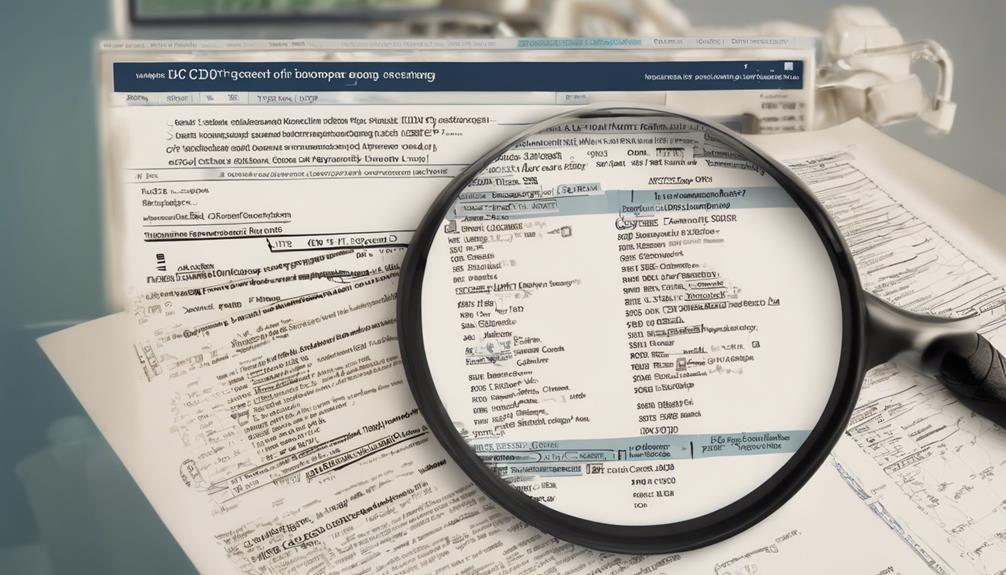
One can identify the key components of the ICD-10 code Z13.820 for screening for osteoporosis by examining its structure and purpose.
- Category: Z13.820 falls under Factors Influencing Health Status and Contact with Health Services, specifically indicating an encounter for osteoporosis screening.
- Billable Code: Z13.820 is a billable code with a Present on Admission (POA) exemption, allowing healthcare providers to submit reimbursement claims related to osteoporosis screening encounters.
- Documentation Accuracy: Proper utilization of ICD-10 code Z13.820 ensures precise documentation and appropriate billing for osteoporosis screening services, facilitating efficient healthcare delivery and reimbursement processes.
Understanding these key components is essential for healthcare professionals to accurately code and bill for osteoporosis screening encounters, supporting comprehensive patient care and ensuring proper reimbursement for provided services.
Documentation Requirements for Reimbursement
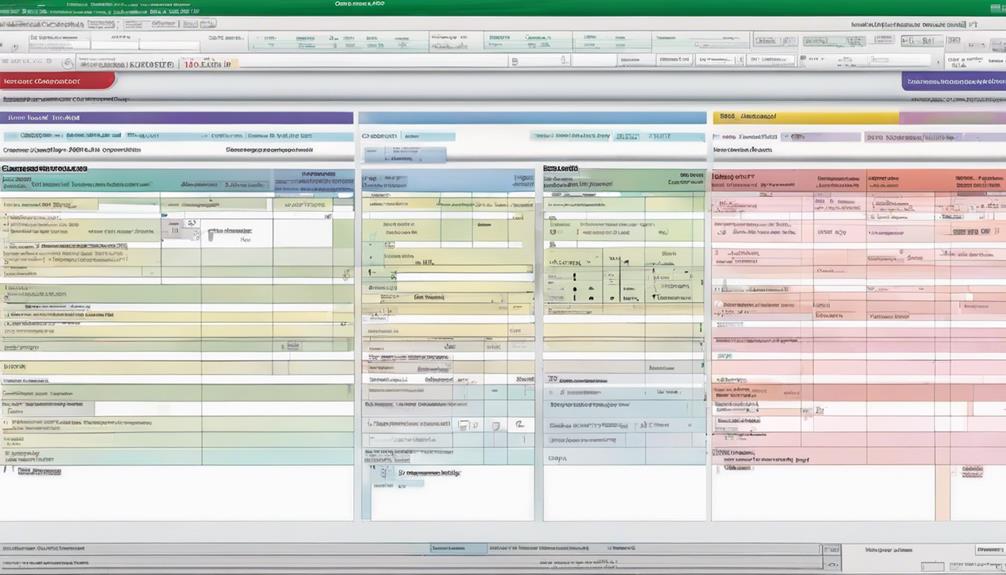
When seeking reimbursement using ICD-10 code Z13.820 for osteoporosis screening, our documentation needs to be thorough.
We must include detailed information in the encounter notes to justify the screening necessity.
Ensuring that the patient's risk factors, family history, and related symptoms are well-documented is crucial for successful reimbursement claims.
Reimbursement Criteria Overview
Accurate coding with ICD-10-CM code Z13.820 is crucial for successful reimbursement of osteoporosis screening. When considering reimbursement criteria, healthcare providers should be mindful of specific patient demographics, risk factors, and screening intervals.
To ensure reimbursement for osteoporosis screening, detailed documentation of the DEXA scan procedure and results is essential. Healthcare professionals must comply with coding guidelines and provide accurate documentation to support the necessity of the screening.
Coding and Billing Guidelines
Proper documentation of the encounter for osteoporosis screening is crucial for accurate coding and billing processes. To ensure proper reimbursement, it's vital to include specific details in the medical record such as the reason for screening, patient demographics, and screening results.
The healthcare provider must document the screening process clearly to support the claim for reimbursement. Meeting the documentation requirements is essential for compliance with coding and billing guidelines for osteoporosis screening. Failure to provide detailed and accurate documentation may result in claim denials or delays in reimbursement.
Adhering to the specific documentation guidelines is key to successful coding and billing for osteoporosis screening procedures.
Common Mistakes in Coding Osteoporosis Screenings

In coding osteoporosis screenings, precision is key to avoid errors commonly associated with incorrect or outdated ICD-10 codes. When dealing with bone density assessments, it's crucial to pay attention to specific details to ensure accurate coding.
Here are some common mistakes to avoid:
- Improper Documentation: Make sure that the medical records clearly support the necessity of the osteoporosis screening to justify the use of specific ICD-10 codes.
- Inappropriate Age Group or Risk Factors: Verify that the screening is being conducted for individuals within the appropriate age range and with relevant risk factors to align with the correct coding criteria.
- Misapplication of Coding Guidelines: Double-check the coding guidelines to accurately determine the encounter as a screening for osteoporosis, avoiding the use of codes meant for other screenings or conditions.
Coding Challenges and Solutions

Navigating the complexities of coding osteoporosis screenings requires a keen understanding of documentation nuances and adherence to coding guidelines. When assigning ICD-10 code Z13.820 for an encounter for screening for osteoporosis, challenges may arise due to varying levels of specificity required for billing purposes.
To overcome these hurdles, it's crucial to comprehend the use of modifiers and adhere closely to documentation guidelines to ensure accurate reimbursement. Staying informed about coding alerts and available resources is essential to navigate any changes in coding guidelines effectively.
Clear and detailed provider documentation plays a vital role in linking the diagnosis code to the screening procedure accurately, facilitating seamless coding and billing processes. By staying vigilant, educating ourselves on the latest updates, and maintaining precise documentation practices, we can tackle these coding challenges and ensure successful outcomes in reporting encounters for osteoporosis screenings.
Coding for Dual-Energy X-ray Absorptiometry (DXA) Scans

When coding for Dual-Energy X-ray Absorptiometry (DXA) scans, we must ensure accurate diagnosis and billing by utilizing the appropriate ICD-10 codes. DXA scans, coded as 77080, are crucial diagnostic examinations for measuring bone density and assessing osteoporosis risk.
To code for DXA scans effectively, consider the following:
- Select the Correct ICD-10 Code: Ensure that the ICD-10 code used for the DXA scan corresponds to the reason for the test, such as screening for osteoporosis (Z13.820).
- Document Medical Necessity: Clearly document the medical necessity of the DXA scan in the patient's medical record to support accurate coding and billing.
- Code to Sign: Assign the ICD-10 code for the suspected condition that prompted the DXA scan to ensure proper documentation and billing accuracy.
Properly coding DXA scans is essential for identifying individuals at risk for osteoporosis, guiding treatment decisions, and facilitating accurate reimbursement processes.
Reimbursement Tips for Osteoporosis Screenings

To maximize reimbursement for osteoporosis screenings, accurately assign ICD-10-CM code Z13.820 for proper documentation and billing. Using Z13.820 ensures that the encounter is specifically recognized as an osteoporosis screening, increasing the likelihood of successful reimbursement.
This code became effective from October 1, 2023, in the 2024 edition of ICD-10-CM. It's crucial to code encounters precisely to receive reimbursement for osteoporosis screening procedures. Z codes like Z13.820 are designed to indicate the reasons for encounters and screenings for various diseases and disorders, including osteoporosis.
Proper documentation and accurate coding of osteoporosis screening encounters are essential for facilitating the reimbursement process. By adhering to these guidelines, healthcare providers can streamline billing processes and ensure that they're properly compensated for the valuable services they provide in the realm of osteoporosis screening.
Updates and Changes in ICD-10 Coding
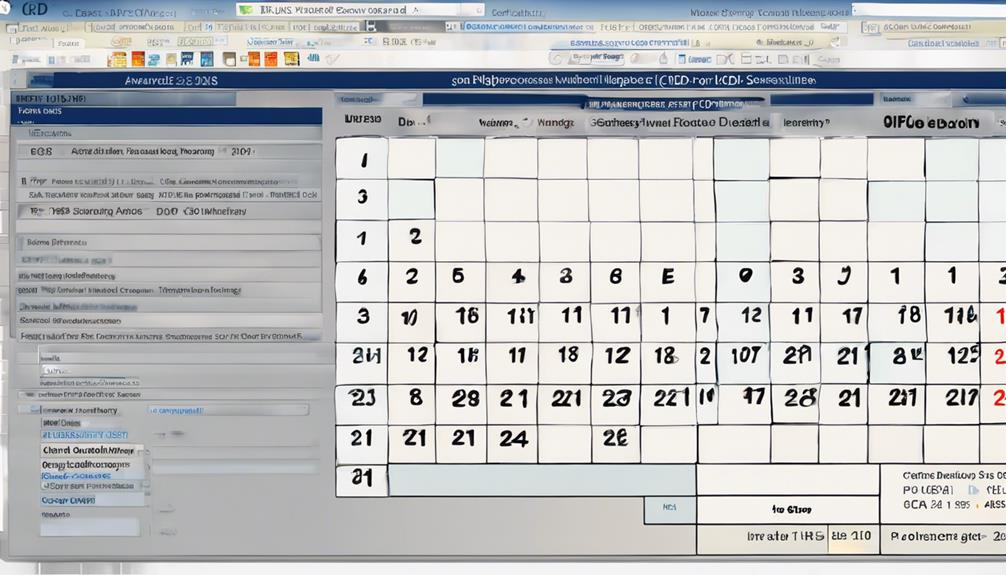
What significant modifications have been made to the ICD-10 coding system recently? Here are some key updates and changes that have taken place:
- New Code Additions: The ICD-10-CM codes are periodically updated to reflect advancements in medical knowledge and technology. Recent updates have included the addition of new codes to address emerging health conditions and procedures.
- Revised Code Descriptions: Existing ICD-10 codes may undergo revisions to provide more specific and accurate descriptions of diagnoses and procedures. These revisions help healthcare providers in accurately documenting patient conditions and treatments.
- Alignment with CPT Codes: Ensuring alignment between ICD-10 codes and Current Procedural Terminology (CPT) codes is crucial for accurate medical billing and coding. Recent modifications in the ICD-10 system have aimed to improve the coordination and consistency between ICD-10 and CPT code sets, facilitating streamlined reimbursement processes for healthcare services.
Coding for Follow-Up Screenings
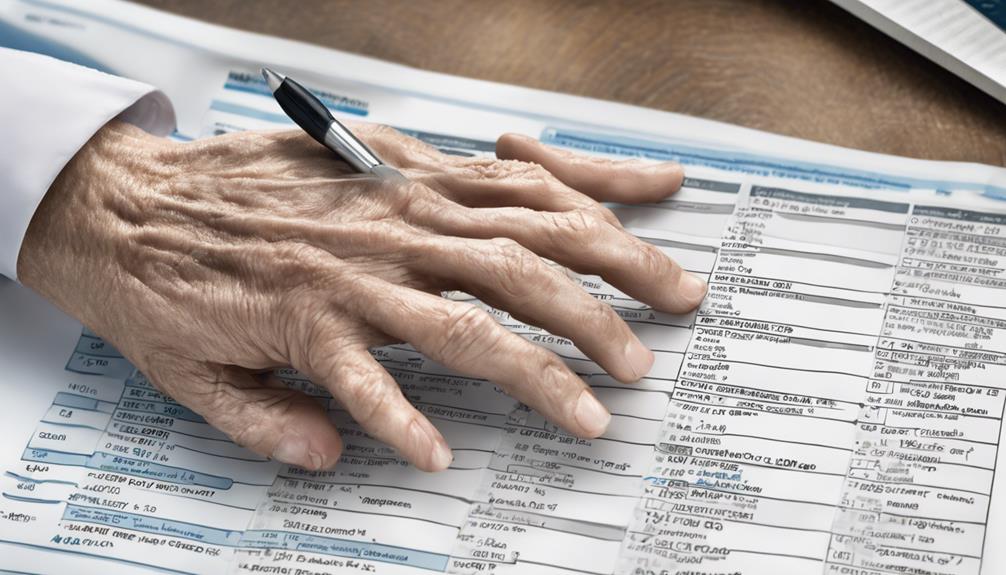
For effective monitoring of bone health in patients at risk of osteoporosis, utilizing the ICD-10 code Z13.820 for follow-up screenings is essential. These regular follow-up screenings are crucial in tracking changes in bone density over time, aiding in the assessment of osteoporosis risk and enabling early detection and management. Healthcare providers use Z13.820 for encounter coding during routine osteoporosis monitoring appointments to ensure accurate billing and appropriate patient care. Proper coding for follow-up screenings is integral in maintaining a comprehensive approach to osteoporosis management within health services.
| Benefits of Coding for Follow-Up Screenings |
|---|
| Tracks changes in bone density over time |
| Assesses osteoporosis risk |
| Enables early detection and management |
Incorporating the ICD-10 code Z13.820 in follow-up screenings not only supports the continuity of care but also enhances the quality of health services provided to individuals at risk of osteoporosis.
Resources for Proper Coding Practice

Transitioning from discussing the importance of using the ICD-10 code Z13.820 for follow-up screenings, we now focus on exploring valuable resources for enhancing proper coding practices in osteoporosis management.
When it comes to ensuring accurate coding and billing for osteoporosis screenings, the following resources can be instrumental:
- Codify's CMS Center: Utilize this resource for coding alerts and guidelines specific to osteoporosis screening to stay informed about the latest updates and changes in coding practices.
- Medicare Coverage Criteria: Adhere to Medicare's coverage criteria for DEXA scans related to osteoporosis screening to ensure compliance and maximize reimbursement.
- Stay Updated on Coding Guidelines: Regularly review and familiarize yourself with coding guidelines to effectively report screening encounters, ensuring proper documentation and billing accuracy.
Frequently Asked Questions
What Is the ICD-10 Code for Encounter for Screening for Osteoporosis?
We know the ICD-10 code for screening for osteoporosis is Z13.820. It's essential for identifying encounters specifically focused on osteoporosis screening. This code falls under the Factors influencing health status and contact with health services category.
Z13.820 isn't used for diagnosing osteoporosis but for screening individuals at risk. Healthcare providers use this code to document encounters where osteoporosis screening is a primary focus.
What Is the Diagnosis for Osteoporosis Screening?
For osteoporosis screening, the diagnosis typically involves assessing bone mineral density and fracture risk. This process aids in identifying individuals at higher risk for osteoporosis-related complications. Screening results guide healthcare providers in recommending preventive measures and appropriate treatments to manage bone health effectively.
Monitoring bone density and implementing lifestyle changes or medications can help prevent fractures and maintain bone strength. Regular screenings are crucial for early detection and intervention.
What Is the CPT Code for Osteoporosis Screening?
Let's address the current question first: the CPT code for osteoporosis screening is 77080.
This code specifically covers bone density studies using DEXA technology. Healthcare providers rely on CPT code 77080 for billing and documenting this essential screening procedure.
Ensuring accurate use of this code is crucial for proper reimbursement and effective management of osteoporosis screening services.
What Diagnosis Code Should Be Used for a Bone Density Test?
For a bone density test, the appropriate diagnosis code should be used to ensure accurate billing and proper treatment selection. Accurate coding is crucial for identifying individuals at risk for osteoporosis. Using the right codes, like Z13.820 for screening, aids in this process.
CPT code 77080 is commonly used for bone density testing. Proper diagnosis coding is imperative for effective bone health management.
Conclusion
In conclusion, accurate coding for osteoporosis screenings is crucial for proper reimbursement and ensuring early detection of this debilitating condition.
Did you know that osteoporosis affects approximately 200 million people worldwide?
By utilizing the ICD-10 code Z13.820 and following coding guidelines, healthcare providers can effectively screen for osteoporosis and improve patient outcomes.
Stay informed and proactive in coding practices to support optimal patient care.









